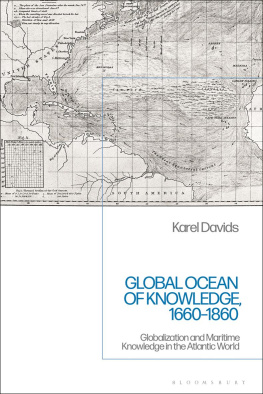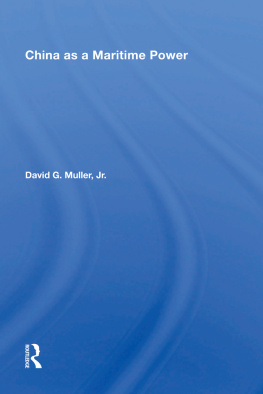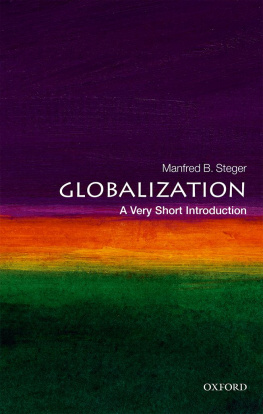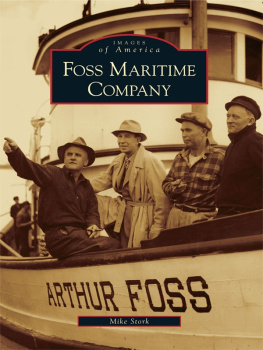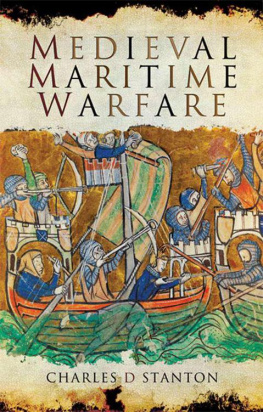Barakaldo Books 2020, all rights reserved. No part of this publication may be reproduced, stored in a retrieval system or transmitted by any means, electrical, mechanical or otherwise without the written permission of the copyright holder.
Publishers Note
Although in most cases we have retained the Authors original spelling and grammar to authentically reproduce the work of the Author and the original intent of such material, some additional notes and clarifications have been added for the modern readers benefit.
We have also made every effort to include all maps and illustrations of the original edition the limitations of formatting do not allow of including larger maps, we will upload as many of these maps as possible.
GLOBALIZATION AND MARITIME POWER
EDITED BY
SAM J. TANGREDI
TABLE OF CONTENTS
Contents
TABLE OF CONTENTS
REQUEST FROM THE PUBLISHER
DEDICATION
To the men, women, and children who died as a result of the terrorist attacks on September 11, 2001in the World Trade Center, in the Pentagon, on the airliners, and in the subsequent campaign in Afghanistanincluding the sailors and naval officers of the Navy Command Center and the Strategy and Concepts Branch of the Office of the Chief of Naval Operations, Many of the contributors to this volume previously served in the Strategy and Concepts Branch or had a professional relationship with its members.
Illustrations
Tables
5-1. Components of Global Terrorism
5-2. al Qaeda
5-3. al Qaeda Strategy
5-4. Deconflicting Two Fronts: Dual Approaches to Eradicate Terrorism and Deny Terrorist Objectives
6-1. Initial Categorization of Countries According to Globalization and Growth Mechanism
6-2. Characteristics of Countries According to Growth/Globalization Categories
6-3. Dimensions of Globalization: Factor Scores, 1988-1996
6-4. Summary of Oil Shock Impact Analysis (U.S.)
6-5. Summary of Oil Shock Impact Analysis
10-1. Asias Energy Future: A Decalogue
Figures
1. Effects of Globalization on Maritime Power
5-1. Strategic Framework
6-1. Globalization and Country Economic Environments
6-2. Globalization Impact on Oil Price Shocks (U.S.)
6-3. Implications of Globalization for Naval Forward Presence
6-4. Patterns of U.S. Globalization
6-5. Yearly Oil Shock Impact (U.S.)
6-6. Cumulative Oil Shock Impact (U.S.)
6-7. Globalization and the Economic Strength of Naval Forward Presence
8-1. World Vital Chokepoints
8-2. U.S. Foreign Waterborne Trade, 1980-1999 (million metric tons)
8-3. Resource Scarcity Summary: Increased Demand
8-4. Resource Scarcity Summary: Physical Constraints.
8-5. Number of Reported Pirate Attacks Worldwide, 1994-2000
8-6. Resource Scarcity Summary: Security Threats
14-1. What is Affected by Doctrine
14-2. What Affects Doctrine
16-1. Forward Engagement
16-2. Basic Building Block: Action-Reaction Cycle
16-3. Effects Nesting
16-4. Effects Nesting: Multiple Overlapping Nests
27-1. Eight Propositions on the Future of American Naval Power
28-1. Aircraft Carrier Battlegroup (CVBG)
28-2. Theater Air and Missile Defense Group (TAMDG)
28-3. Theater Land Attack Group (TLAG)
28-4. Mine Countermeasures Group (MCM)
28-5. Expeditionary Land Attack Group (ELAG)
Preface
Vice-Admiral Paul G. Gaffney II, USN
President, National Defense University
In 1998, the Institute for National Strategic Studies at the National Defense University was asked to conduct a major study of the effects of globalization on Americas national security. The results of the study were published as The Global Century; Globalization and National Security, a two-volume book and associated summary report, both of which have received acclaim. Over 50 experts from a wide range of fields contributed to the effort. Sponsored by the Department of the Navy, The Global Century contained a section addressing the future of military and naval power in a globalizing world; however, the majority of the study concentrated on the causes of globalization and the ensuing political, economic, cultural, and societal effects.
Following in the wake of the original project, the volume you now hold takes the study to a deeper, more specific level of analysis. Globalization and Maritime Power focuses on the direct impact of globalization on naval forces and maritime aspects of commerce and international relations. It seeks to translate the general knowledge that we have learned about the phenomenon of globalization into the language of strategy and defense policy. It is both deductive and inductive in its approachusing general knowledge of globalization to deduce its impact on the maritime world, and using inductive reasoning in applying those maritime impacts to the overall fabric of defense planning. Its intent is to provide our national security leaders with analyses that can be directly applied to some of the problems and issues that we will face in the future security environment.
Many of the ideas presented in this book were discussed and debated in a series of colloquia held at the National Defense University and were part of a dialogue with other analytical organizations, principally the Center for Naval Analyses and the Center for Strategic and International Studies. Particular effort was made to elicit contributions from a broad range of experts with diverse sets of experiences and perspectives. The institutional affiliations of individual authors vary from the Department of the Navy to the Joint Staff to intelligence agencies to our sister war colleges to civilian universities. Of course, the views presented herein are those of the authors and do not necessarily reflect the official position of any of these agencies.
Although the focal points of Globalization and Maritime Power are naval and maritime, its spirit is very joint. It approaches its assessment of maritime power as a part of our overall joint military capabilities. Moreover, its treatment of such effects of globalization as terrorism and transnational threats contains lessons of value for all involved in national security decision-making, including agencies outside the Department of Defense.
Acknowledgments
This volume is the product of a research project on the maritime implications of globalization sponsored by the Department of the Navy and carried out by the Institute for National Strategic Studies (INSS) at the National Defense University (NDU). While not intended to be the third volume of the previous INSS study, The Global Century: Globalization and National Security, it fits closely with the themes of that earlier work and greatly benefits from previous insights. The earlier work was the brainchild of former Under Secretary of the Navy Jerry MacArthur Hultin, who also deserves credit for inspiring this continuation. Current Under Secretary of the Navy Susan Livingstone also provided encouragement. The continuation of the project was due to the unflagging support of former Deputy Under Secretary of the Navy Charles Nemfakos, who recently retired after over 30 years of Federal service. Many individuals on Mr. Nemfakos staff made contributions, most notably Captain Kenneth Milhoan, USN, and Captain Kip Nicely, USN, who served as project supervisors on the Navys end. Rear-Admiral Stephen G. Smith, USN, Director, Office of Program Appraisal, Office of the Secretary of the Navy, also provided guidance for the overall project.





